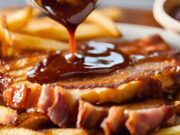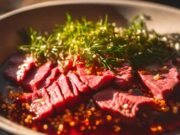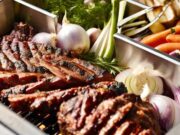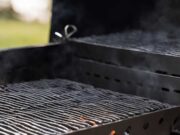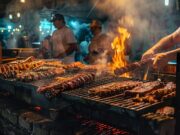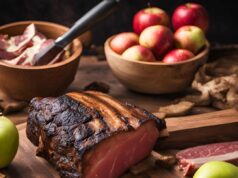Grilling enthusiasts understand that mastering the art of rotisserie cooking can significantly enhance outdoor culinary experiences.
To achieve that perfect, evenly cooked meal, it is essential to comprehend the distinction between direct and indirect heat. This article will discuss when to utilize each method, the unique advantages of rotisserie cooking, and how to effectively set up your grill for optimal results.
With practical tips and insights provided, you will be well-equipped to impress family and friends at your next barbecue gathering.
Key Takeaways:
- Direct heat is ideal for cooking foods that require a quick sear, while indirect heat is best for slow and steady cooking.
- Rotisserie cooking adds flavor and tenderness to meats and vegetables, making it a valuable technique for any grilling enthusiast.
- To set up your grill for rotisserie cooking, prepare one side for direct heat and the other for indirect heat, and use a thermometer to monitor the temperature and cooking time.
Understanding Direct and Indirect Heat
Understanding the concepts of direct and indirect heat is essential for mastering grilling techniques and achieving perfectly cooked meat.
Direct heat involves placing food directly over the heat source, resulting in high-temperature cooking that can quickly sear the exterior. This method is ideal for items like steaks and chicken wings, which benefit from a charred surface.
Conversely, indirect heat involves cooking food away from the flames, allowing for a lower temperature that ensures larger cuts of meat, such as roasts or whole birds, cook evenly without drying out.
When to Use Each Method
Understanding when to use direct heat versus indirect heat while grilling can greatly influence the flavor and texture of your meat.
For instance, grilling lamb chops or shrimp over direct heat at high temperatures allows the outer layer to caramelize beautifully, enhancing their natural flavors and creating a delightful crispy exterior. Conversely, when preparing a pork shoulder or a whole chicken, the indirect heat method is more effective, as it enables the meat to cook thoroughly without burning the exterior. This technique also allows for the infusion of flavors through marinades or dry rubs by placing a pan with spices or liquid smoke adjacent to the meat.
Timing is essential; for tender cuts, aim for approximately 4-6 minutes per side, while larger cuts may require several hours at lower temperatures to achieve optimal tenderness and flavor development.
The Importance of Rotisserie Cooking
Rotisserie cooking is a technique that significantly enhances the flavor and texture of meat, offering a unique and satisfying dining experience.
This method involves securing the meat on a spit and cooking it slowly over a heat source, allowing it to self-baste in its own juices and drippings. This process not only enhances flavor but also improves tenderness.

It is particularly ideal for larger cuts, such as whole chickens, picanha, or even roasts. By ensuring even heat distribution, rotisserie cooking promotes a crispy exterior while keeping the inside juicy and succulent, making it a preferred choice for barbecue enthusiasts.
Benefits of Using a Rotisserie
Utilizing a rotisserie for cooking offers numerous advantages that significantly enhance your grilling experience. The self-basting feature of the rotisserie allows the meat to continuously baste in its own juices, resulting in an exceptionally juicy and flavorful final product.
This technique is particularly effective for larger cuts of meat, such as whole chickens or roasts, as it ensures even cooking, prevents drying out, and creates a delicious charred exterior that adds depth to the flavor profile.
The consistent rotation of the meat guarantees that every side is evenly exposed to heat, making it an efficient cooking method. Meats such as pork, lamb, and even vegetables can be beautifully prepared using this technique. Proper preparation, including marinating or seasoning the meat with herbs and spices, can further elevate the taste.
The enhanced flavors, along with the appealing presentation of a perfectly roasted piece of meat, contribute to the popularity of rotisserie cooking among culinary enthusiasts. With reduced cooking time and improved moisture retention, it is clear why many individuals opt for this method in their grilling endeavors.
How to Set Up Your Grill for Rotisserie Cooking
Setting up your grill for rotisserie cooking requires careful attention to detail to ensure optimal results and safety. Begin by preparing your grill, whether it’s a charcoal grill or a gas model, to accommodate indirect heat cooking. This involves creating a two-zone fire, allowing one side of the grill to be hot for searing while the other side remains cooler for slow cooking.
This technique is essential for achieving a perfectly cooked rotisserie chicken or tri-tip. Properly managing heat and utilizing a drip tray will help capture flavorful drippings while preventing flare-ups.
Preparing the Grill for Direct and Indirect Heat
Preparing your grill for both direct and indirect heat is essential for achieving optimal results when cooking with a rotisserie. Begin by ensuring that your charcoal grill is adequately preheated, allowing the coals to become ashen and hot for direct heat cooking, which is critical for searing meats. For indirect heat, arrange the coals on one side of the grill to create a cooler zone on the opposite side, ideal for slower cooking of larger cuts like picanha or chicken.
Understanding fire management is equally important, as it helps maintain consistent cooking temperatures. The necessary tools for this process include:
- A sturdy set of grilling tongs
- A chimney starter for even coal ignition
- An accurate thermometer to monitor heat levels
When setting up your grill, adjust the air vents to control airflow; opening them increases heat while closing them cools down the fire. Mastering these techniques not only enhances flavor but also allows for versatile cooking methods, enabling your grill to excel in various culinary applications.
Tips for Successful Rotisserie Cooking
To achieve optimal results in rotisserie cooking, following essential tips can enhance flavor and ensure perfectly cooked meat.
First, maintaining proper temperature control is crucial; utilizing a reliable thermometer allows you to monitor the internal temperature of the meat throughout the cooking process. Additionally, basting the meat periodically with its juices or a marinade can enrich the flavor and maintain moisture, resulting in a deliciously succulent final product.
Temperature Control and Monitoring Cooking Time
Temperature control is essential in rotisserie cooking, as it directly influences both the cooking time and flavor of the meat. Utilizing a reliable meat thermometer will enable you to monitor the internal temperature, ensuring that your chicken, tri-tip, or any other cut achieves its optimal doneness without becoming dry. Aim for a consistent cooking temperature, ideally between 350°F and 375°F, to strike the perfect balance between a crispy exterior and a juicy, flavorful interior.
Maintaining this temperature range is critical not only for taste but also for food safety. Different types of meat require specific internal temperatures to be deemed safe for consumption:
- Chicken should reach at least 165°F.
- Pork generally requires a minimum temperature of 145°F.
- Beef is best cooked to 135°F for medium-rare.
To monitor cooking time effectively, regularly check the temperature with your meat thermometer. Additionally, be sure to rotate the meat as necessary to ensure even cooking. Leveraging the rotisserie’s rotating function can help distribute heat uniformly, maximizing flavor and texture while minimizing the risk of undercooked spots.
Recap and Final Tips for Success
In summary, successful rotisserie cooking depends on your understanding of both direct and indirect heat, maintaining precise temperature control, and employing proper grilling techniques. By implementing these final tips, you can ensure that your grilling sessions are not only enjoyable but also result in deliciously flavored meats.
By paying close attention to the heat zones of your grill, you can achieve that sought-after perfectly cooked result every time. It is advisable to prepare a flavorful marinade in advance, allowing your meat to soak in those rich flavors for several hours before cooking. During the grilling process, rotating the meat ensures even cooking and helps minimize flare-ups.
Additionally, do not underestimate the importance of resting your meat after cooking; this step allows the juices to redistribute throughout, resulting in an exceptionally juicy and tender dish. Utilizing a meat thermometer can also enhance your accuracy for doneness, elevating your rotisserie skills to the next level.
Frequently Asked Questions
What is the difference between direct and indirect heat on a grill?
Direct heat refers to cooking food directly over the heat source, while indirect heat involves cooking food away from the heat source, using indirect heat to cook the food instead.
Why is it important to know how to set up your grill for rotisserie cooking?
Setting up your grill for rotisserie cooking properly ensures that your food is cooked evenly and thoroughly, resulting in a delicious and perfectly cooked meal.
How do I set up my grill for indirect heat?
To set up your grill for indirect heat, simply place a drip pan or heat deflector between the heat source and the food. This will allow for indirect heat to cook the food evenly.
What are the benefits of using indirect heat for rotisserie cooking?
Indirect heat allows for slow and even cooking, resulting in tender and flavorful meats. It also helps prevent flare-ups and burning of the food.
Can I use a rotisserie attachment on a gas grill?
Yes, most gas grills come with a rotisserie attachment or have one available for purchase. Just make sure to follow the manufacturer’s instructions for proper set up and usage.
Can I use direct and indirect heat together for rotisserie cooking?
Yes, some recipes may call for a combination of direct and indirect heat for rotisserie cooking. This allows for a crispy exterior and a juicy interior of the food.








